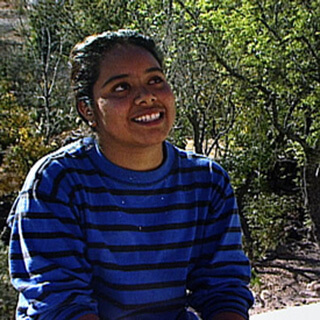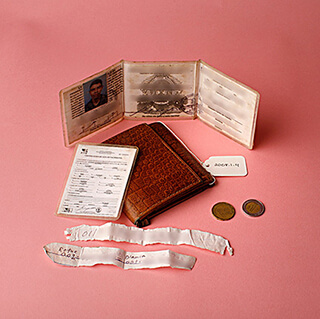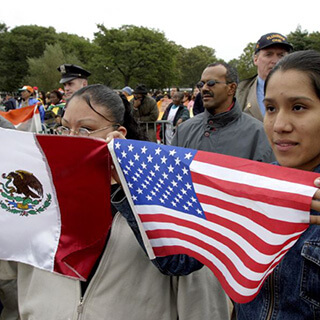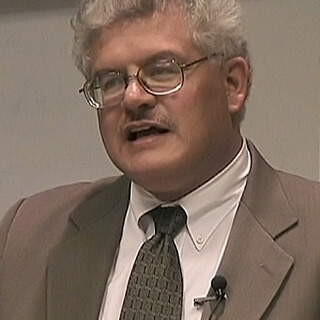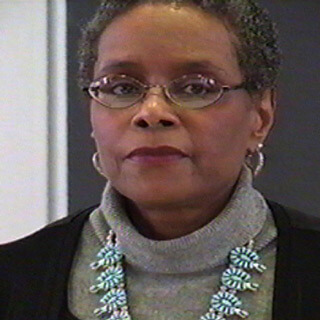Overview
C.J. Alvarez reviews Border Contraband: A History of Smuggling across the Rio Grande by George T. Díaz (Austin: University of Texas Press, 2015).
Review

In Border Contraband: A History of Smuggling across the Rio Grande, George T. Díaz addresses the US-Mexico borderland's tawdry reputation, recently refueled by unsubstantiated stories about cocaine packed into infant corpses and live human organ trafficking (141–144). Díaz, who teaches at the University of Texas Rio Grande Valley, calls this the "black legend" of the border. These grotesqueries are part of a popular narrative about the most recent drug war in Mexico, which on its surface appears to be driven by mindless violence. From a historical perspective, however, the drug war in Mexico displays the predictable symptoms of previous drug wars from Southeast Asia to Colombia, including law enforcement's preoccupation with "kingpins," a strong government preference for criminal justice and military responses, and an underlying and seemingly tireless US obsession with psychoactive substances.1Alfred McCoy identifies five distinct drug wars since Richard Nixon's inauguration of the "War on Drugs" in the late '60s and early '70s in Alfred McCoy, The Politics of Heroin: CIA Complicity in the Global Drug Trade, Afghanistan, Southeast Asia, Central America, Colombia (Chicago: Chicago Review Press, 2003), 387–460. Kathleen Frydl thinks the drug war started earlier, in conjunction with the Cold War in the '40s and '50s, and traces the preoccupation with "kingpins" to domineering figures like Harry Anslinger, the director of the Federal Bureau of Narcotics from 1930–1962 in Kathleen Frydl, The Drug Wars in America, 1940–1973 (New York: Cambridge University Press, 2013), 59–119. In the very interesting case of marijuana prohibition, Isaac Campos makes the convincing argument that Mexican elites actually beat the United States to the punch by regulating it first, though typically U.S. politicians, reformers, and society at large have been unusually concerned about mind-altering substances compared to other nations. See Isaac Campos, Home Grown: Marijuana and the Origins of Mexico's War on Drugs (Chapel Hill: The University of North Carolina Press, 2014), 203–223.
In light of all this mayhem and confusion, Díaz draws on a rich variety of sources to make a most important point about the longer history of contraband: non-violent amateurs have been responsible for the majority of smuggling across the US-Mexico border. Further, most contraband consists of consumer goods, not illegal drugs. Smugglers tend to be regular people seeking to avoid taxes and tariffs on clothing, electronics, fruits, and vegetables. Díaz goes so far as to refer to these border transgressors as a "contrabandista community" (2), united in their unwillingness to pay extra for common merchandise to fill the coffers of US and Mexican treasuries.
![Los charros contrabandistas, Juego de dados [The cowboy smugglers, Dice game], ca. 1890–1910. Etching by José Guadalupe Posada. Courtesy of the Library of Congress Prints and Photographs Division, loc.gov/pictures/resource/ppmsc.03448. Los charros contrabandistas, Juego de dados [The cowboy smugglers, Dice game], ca. 1890–1910. Etching by José Guadalupe Posada. Courtesy of the Library of Congress Prints and Photographs Division, loc.gov/pictures/resource/ppmsc.03448.](https://i0.wp.com/southernspaces.org/wp-content/uploads/2019/07/alvarez-002-contrabandistas.jpg?ssl=1)
In the late nineteenth century, before either the US or Mexican government began policing drugs in earnest, most smuggling was banal and low stakes. There were women who concealed lace, kid gloves, and silk hose under their garments to avoid taxes (51), men who smuggled rawhides (33), and a young boy caught by US Customs agents for trying to bring across undeclared doilies, napkins, and handkerchiefs (52). Even Mariano Reséndez—lionized in Mexican folk ballads as one of the few nineteenth-century smugglers to raise his gun against government agents—mainly smuggled calico (51).

Los Alegres de Terán, a Norteño singing duo, perform a version of the popular corrido "Mariano Reséndez." Screenshot by Southern Spaces, June 7, 2016.
Díaz unearths dozens of similar examples from historical archives in Texas, Mexico, and Washington. Beneath them all lies a deeper reality—local people decided for themselves what laws were just and what laws were unjust, and behaved accordingly. In Díaz's analysis, this is how most smuggling worked, and in many ways this is how it still works. Sometimes border people felt they should not have to pay extra for ordinary goods that were so close at hand, and sometimes they objected to how the tariffs were spent by the US or Mexican governments (29).
Certainly, not all smugglers were accepted as part of the "moral community" of border people. Some worked intentionally to evade criminal sanction, not revenue collection. Cattle rustlers in the late nineteenth century, along with bootleggers and drug runners of the 1920s and later, often met with sharp and widespread disapproval in border societies (22, 41, 113–114). There are critical distinctions, as Díaz notes, between amateur smuggling and professional trafficking, non-violent and violent smugglers. He implies that "crime" is a meaningful category of analysis only within a political and juridical context. What counts as criminal activity changes over time, depending on a government's interest or willingness to police or prohibit.2The best examination of this concept I've found is in Eric Monkkonen's history of police, which stands to this day as one of the most sophisticated historical studies of law enforcement in the U.S. See Eric H. Monkkonen, Police in Urban America, 1860–1920 (New York: Cambridge University Press, 1981). Nevertheless, Díaz also adopts many of the categories and characterizations of "criminality" generated by government policing agencies.3The historian Paul Gootenberg calls this "talking like a state," which he believes can be an intellectual and political pitfall because it can obscure the fact that criminality itself is always politically and culturally constructed. See Paul Gootenberg, "Talking About the Flow: Drugs, Borders, and the Discourse of Drug Control," Cultural Critique, no. 71 (2009), 13.
![A sign at the humble ferry station for the hand-pulled Los Ebanos Ferry or El Chalan [...] that travels across the Rio Grande River, Los Ebanos, Texas, March 3, 2014. Photograph by Carol M. Highsmith. Courtesy of the Library of Congress Prints and Photographs Division, loc.gov/pictures/resource/highsm.27608/. A sign at the humble ferry station for the hand-pulled Los Ebanos Ferry or El Chalan [...] that travels across the Rio Grande River, Los Ebanos, Texas, March 3, 2014. Photograph by Carol M. Highsmith. Courtesy of the Library of Congress Prints and Photographs Division, loc.gov/pictures/resource/highsm.27608/.](https://i0.wp.com/southernspaces.org/wp-content/uploads/2019/07/alvarez-005-riosign.jpg?ssl=1)
What if we were to assess "criminality" along the same lines as the smuggling of consumer goods? In other words, as behavior generated by the notion that some laws are unjust and should be resisted? How should we understand the points of overlap between social mores and government proscription, and how should we understand the ways in which they do not converge? These questions require a nuanced definition of the "state," which Díaz does not supply. Like many authors, he uses "state" as a relatively interchangeable term that can refer to law enforcement organizations, federal and local governments, federal bureaucracies, and to the manifestation of the unified "will" of "the United States" or "Mexico," as if the nation-state itself could embody desire and aspiration. He describes how some smugglers posed a "threat" to the state and "national security" (45, 113), and makes several references to the "power" of the state without considering the underpinnings of such assertions (82, 103).
The questions of what exactly constitutes the "state," where its power resides, and how that power is expressed are particularly relevant in the study of black markets along international borders. There is a robust and growing literature that understands the "state" as simultaneously holding a monopoly on the legitimate use of force and as a heterogeneous constellation of bureaucracies and agencies that often work at cross-purposes and even in opposition to one another.4Building on Michael Mann's work, William Novak has helped elucidate the difference between "strong" and "weak" states. See William J. Novak, "The Myth of the 'Weak' American State," American Historical Review 113, no. 3 (2008) and Michael Mann, The Sources of Social Power: The Rise of Classes and Nation States, 1760–1914 (New York: Cambridge University Press, 1993). Several other key texts, both old and new, engage directly with the problem of state capacity and expansion. See Stephen Skowronek, Building a New American State: The Expansion of National Administrative Capacities, 1877–1920 (New York: Cambridge University Press, 1982), Charles Maier, Leviathan 2.0: Inventing Modern Statehood (Cambridge, MA: The Belknap Press of Harvard University Press, 2012), and James Sparrow, Warfare State: World War II Americans and the Age of Big Government (New York: Oxford University Press, 2013). For the Mexican side of the equation, see Alan Knight, "The Modern Mexican State: Theory and Practice," in The Other Mirror: Grand Theory through the Lens of Latin America, ed. Miguel Angel Centeno and Fernando López-Alves (Princeton, NJ: Princeton University Press, 2000). These works tend to ignore the border, and histories of the border tend to ignore this kind of political theory, to the detriment of both bodies of scholarship.
One of Díaz's strengths lies in his sensitivity to local color. Geography matters to him, and to the subjects he writes about. Most of the examples in Border Contraband come from Texas, an unusual state that began in early modernity as a fringe province on the edges of the vast Spanish empire, was transformed into a Mexican state during the age of revolution, converted once again to a secessionist stronghold as an "independent" republic, annexed as a slave state of the rebel South, and finally incorporated into the restored Union. All the while, the area most people think of as "Texas" was home to Comanches, Kiowas, Apaches, and other indigenous peoples. Their histories overlap and compete with the grand political narrative.5See Pekka Hämäläinen, The Comanche Empire (New Haven, CT: Yale University Press, 2009).


Every phase of this circuitous history reveals the extent to which Texas is embedded in continent-wide and global processes. Ever since railroads fused the two nations in the late nineteenth century, a significant percentage of US-Mexico trade passes through the mega-ports of El Paso and Laredo. This incessant pulse of capital circulation, worth hundreds of billions of dollars a year, forms the backbone of the US-Mexico economic colossus. By examining the transshipment of oil and gas, light and heavy manufacturing, and agribusiness, we can begin to see a nexus that stretches out to touch nearly every part of US and Mexican territory and society. Contraband is an inevitable, irrepressible, and "normal" feature of this complex economic interdependence. Police attempts to facilitate legal business while trying to surgically excise illicit trade not only miss the point of the larger system logic, but tend to increase the professionalism and violence of criminal syndicates. Díaz shows us the historical roots of this phenomenon (39, 93, 114).
Despite the deep interconnectedness of the United States and Mexico, as well as the major political and social questions this interdependence engenders, narratives of US-Mexico relations have yet to become required reading among American intellectuals.6Journalists like Alma Guillermoprieto, Laura Carlsen, Francisco Goldman, Alfredo Corchado, and others have been working tirelessly to address this problem by writing excellent articles in the New York Review of Books, The New Yorker, The Nation, and elsewhere. Books like Border Contraband can help correct this myopia by reminding us that black markets do not exist outside the "state," but rather in symbiotic relation to it. We can go further by joining the empirical expertise of historians like Díaz to conceptual analyses of state power, advanced capitalism, and criminal justice in order to better understand the world we live in today.7Saskia Sassen has written a particularly provocative book using the logic of "expulsion" to understand the vicissitudes of the current mode of globalization, and David Garland makes a compelling argument about the rise of what he calls "expressive justice" since the 1980s. Both these works could work symbiotically with books like Border Contraband to generate more precise answers to today's most important questions. See Saskia Sassen, Expulsions: Brutality and Complexity in the Global Economy (Cambridge, MA: The Belknap Press of Harvard University Press, 2014) and David Garland, The Culture of Control: Crime and Social Order in Contemporary Society (Chicago: University of Chicago Press, 2001). 

About the Author
C.J. Alvarez is assistant professor in the department of Mexican American and Latina/o Studies at the University of Texas at Austin and an affiliate of the Teresa Lozano Long Institute of Latin American Studies and the Center for Mexican American Studies.
Recommended Resources
Text
Campos, Isaac. Home Grown: Marijuana and the Origins of Mexico's War on Drugs. Chapel Hill: The University of North Carolina Press, 2014.
Frydl, Kathleen. The Drug Wars in America, 1940–1973. New York: Cambridge University Press, 2013.
Garland, David. The Culture of Control: Crime and Social Order in Contemporary Society. Chicago: University of Chicago Press, 2001.
Gootenberg, Paul. "Talking About the Flow: Drugs, Borders, and the Discourse of Drug Control." Cultural Critique, no. 71 (2009): 13–46.
Hämäläinen, Pekka. The Comanche Empire. New Haven, CT: Yale University Press, 2008.
Knight, Alan. "The Modern Mexican State: Theory and Practice." In The Other Mirror: Grand Theory through the Lens of Latin America, edited by Miguel Angel Centeno and Fernando López-Alves. Princeton, NJ: Princeton University Press, 2001.
Maier, Charles. Leviathan 2.0: Inventing Modern Statehood. Cambridge, MA: The Belknap Press of Harvard University Press, 2012.
Mann, Michael. The Sources of Social Power: The Rise of Classes and Nation States, 1760–1914. New York: Cambridge University Press, 2012.
McCoy, Alfred. The Politics of Heroin: CIA Complicity in the Global Drug Trade, Afghanistan, Southeast Asia, Central America, Colombia. Chicago: Chicago Review Press, 2003.
Monkkonen, Eric H. Police in Urban America, 1860–1920. New York: Cambridge University Press, 1981.
Novak, William J. "The Myth of the 'Weak' American State." The American Historical Review 113, no. 3 (2008): 752–72.
Sassen, Saskia. Expulsions: Brutality and Complexity in the Global Economy. Cambridge, MA: The Belknap Press of Harvard University Press, 2014.
Skowronek, Stephen. Building a New American State: The Expansion of National Administrative Capacities, 1877–1920. New York: Cambridge University Press, 1982.
Sparrow, James. Warfare State: World War II Americans and the Age of Big Government. New York: Oxford University Press, 2013.
Web
Bowden, Charles. "Our Wall." National Geographic. May 2007. http://ngm.nationalgeographic.com/2007/05/us-mexican-border/bowden-text.
Burnett, John. "U.S.-Mexico Border Sees Resurgence of Central Americans Seeking Asylum." NPR Morning Edition. May 31, 2016. http://www.npr.org/2016/05/31/480073262/u-s-mexico-border-sees-resurgence-of-central-americans-seeking-asylum.
Gaskill, Melissa. "The Environmental Impact of the U.S.-Mexico Border Wall." Newsweek. February 14, 2016. http://www.newsweek.com/2016/02/26/environmental-impact-us-mexico-border-wall-426310.html.
Inskeep, Steve. "Borderland." NPR. April 3, 2014. http://apps.npr.org/borderland/.
Kilpatrick, Kate. "U.S.-Mexico Border Wreaks Havoc on Lives of Indigenous Desert Tribe." Al Jazeera America. May 25, 2015. http://america.aljazeera.com/articles/2014/5/25/us-mexico-borderwreakshavocwithlivesofanindigenousdesertpeople.html.
McQuade, Aidan. "Migrant Crisis: Smuggling or Trafficking? Politicians Don't Seem to Know." The Guardian. April 22, 2015. http://www.theguardian.com/global-development/2015/apr/22/migrant-crisis-smuggling-trafficking-politicians-dont-seem-to-know.
"Mexico: Crimes at the Border." Frontline World. May 27, 2008. http://www.pbs.org/frontlineworld/stories/mexico704/.
Miller, Todd. "Is the US-Mexico Border Turning into a War Zone?" Mother Jones. July 11, 2013. http://www.motherjones.com/politics/2013/07/border-drones-illegal-immigration.
Pitts, Byron and Dan Lieberman. "In Efforts to Secure US-Mexico Border, Ariz. Native Americans Feel Caught in the Middle." ABC News. June 27, 2013. http://abcnews.go.com/US/efforts-secure-us-mexico-border-ariz-native-americans/story?id=19496394.
Schwartz, Marisa. "Deliminations: Rethinking the U.S.-Mexico Border." Time Magazine. November 20, 2015. http://time.com/3813321/us-mexico-border-1821/.
Similar Publications
| 1. | Alfred McCoy identifies five distinct drug wars since Richard Nixon's inauguration of the "War on Drugs" in the late '60s and early '70s in Alfred McCoy, The Politics of Heroin: CIA Complicity in the Global Drug Trade, Afghanistan, Southeast Asia, Central America, Colombia (Chicago: Chicago Review Press, 2003), 387–460. Kathleen Frydl thinks the drug war started earlier, in conjunction with the Cold War in the '40s and '50s, and traces the preoccupation with "kingpins" to domineering figures like Harry Anslinger, the director of the Federal Bureau of Narcotics from 1930–1962 in Kathleen Frydl, The Drug Wars in America, 1940–1973 (New York: Cambridge University Press, 2013), 59–119. In the very interesting case of marijuana prohibition, Isaac Campos makes the convincing argument that Mexican elites actually beat the United States to the punch by regulating it first, though typically U.S. politicians, reformers, and society at large have been unusually concerned about mind-altering substances compared to other nations. See Isaac Campos, Home Grown: Marijuana and the Origins of Mexico's War on Drugs (Chapel Hill: The University of North Carolina Press, 2014), 203–223. |
|---|---|
| 2. | The best examination of this concept I've found is in Eric Monkkonen's history of police, which stands to this day as one of the most sophisticated historical studies of law enforcement in the U.S. See Eric H. Monkkonen, Police in Urban America, 1860–1920 (New York: Cambridge University Press, 1981). |
| 3. | The historian Paul Gootenberg calls this "talking like a state," which he believes can be an intellectual and political pitfall because it can obscure the fact that criminality itself is always politically and culturally constructed. See Paul Gootenberg, "Talking About the Flow: Drugs, Borders, and the Discourse of Drug Control," Cultural Critique, no. 71 (2009), 13. |
| 4. | Building on Michael Mann's work, William Novak has helped elucidate the difference between "strong" and "weak" states. See William J. Novak, "The Myth of the 'Weak' American State," American Historical Review 113, no. 3 (2008) and Michael Mann, The Sources of Social Power: The Rise of Classes and Nation States, 1760–1914 (New York: Cambridge University Press, 1993). Several other key texts, both old and new, engage directly with the problem of state capacity and expansion. See Stephen Skowronek, Building a New American State: The Expansion of National Administrative Capacities, 1877–1920 (New York: Cambridge University Press, 1982), Charles Maier, Leviathan 2.0: Inventing Modern Statehood (Cambridge, MA: The Belknap Press of Harvard University Press, 2012), and James Sparrow, Warfare State: World War II Americans and the Age of Big Government (New York: Oxford University Press, 2013). For the Mexican side of the equation, see Alan Knight, "The Modern Mexican State: Theory and Practice," in The Other Mirror: Grand Theory through the Lens of Latin America, ed. Miguel Angel Centeno and Fernando López-Alves (Princeton, NJ: Princeton University Press, 2000). |
| 5. | See Pekka Hämäläinen, The Comanche Empire (New Haven, CT: Yale University Press, 2009). |
| 6. | Journalists like Alma Guillermoprieto, Laura Carlsen, Francisco Goldman, Alfredo Corchado, and others have been working tirelessly to address this problem by writing excellent articles in the New York Review of Books, The New Yorker, The Nation, and elsewhere. |
| 7. | Saskia Sassen has written a particularly provocative book using the logic of "expulsion" to understand the vicissitudes of the current mode of globalization, and David Garland makes a compelling argument about the rise of what he calls "expressive justice" since the 1980s. Both these works could work symbiotically with books like Border Contraband to generate more precise answers to today's most important questions. See Saskia Sassen, Expulsions: Brutality and Complexity in the Global Economy (Cambridge, MA: The Belknap Press of Harvard University Press, 2014) and David Garland, The Culture of Control: Crime and Social Order in Contemporary Society (Chicago: University of Chicago Press, 2001). |
